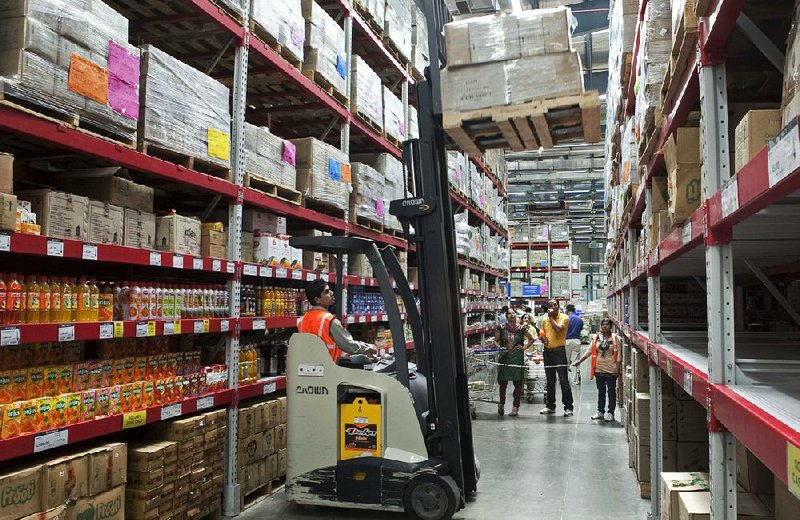BOMBAY, India — Wal-Mart Stores Inc. plans to open retail outlets in India in the next 12 to 18 months, the company said Friday, making it the first multinational to jump on the government’s decision to open the country’s huge retail market to foreign players.
Raj Jain, the managing director of Bharti Wal-Mart, a joint venture that operates 17 outlets that cater to small businesses in India, confirmed by e-mail that Bentonville-based Wal-Mart plans to open stores that serve consumers over the next 18 months, but declined to say how many stores.
Wal-Mart’s existing joint venture in India buys fresh produce directly from about 1,200 farmers in the northern Indian state of Punjab and helps them improve their yield through better farming techniques, Jain said in a separate interview last year.
India announced last week that it would allow foreign firms to take a majority stake in multibrand stores for the first time. The surprise decision cheered investors but cost the ruling Congress Party an important coalition ally.
New Delhi first tried to enact the measure last year but backed down in the face of resistance from coalition partners, badly damaging its credibility with global investors. Before the reversal, foreign retailers like Wal-Mart could only operate wholesale outlets.
Opponents say the move will cost Indians jobs and decimate millions of momand-pop shops. Advocates say welcoming players like Wal-Mart is necessary to attract the investment needed for India to modernize its food-supply chains, reduce waste and bring down spiraling food prices.
While India’s retail infrastructure, such as cold storage areas and warehouses, is “desperately lacking,” Wal-Mart can supply its own systems, said Michael Moriarty, a partner in the retail practice of management consulting firm A.T. Kearney.
The new rules mandate that foreign retailers spend half their investment on building supply-chain infrastructure and source 30 percent of manufactured goods from local small- and medium-sized companies. Foreign retailers are also restricted to India’s 53 cities with populations exceeding 1 million.
Individual states will have the right to decide whether to let the retailers operate in their territory. Only 10 of India’s 35 states and territories that are controlled by the ruling Congress Party are likely to welcome foreign retailers initially, according to Eurasia Group analyst David Sloan.
Wal-Mart doesn’t expect getting approval from states to be a major hurdle in expanding in India and is counting on local administrations appreciating the benefits foreign retailers will provide, Scott Price, head of Asia operations at Wal-Mart, said in an interview in Hong Kong.
“The restrictions will become unnecessary in the future,” Price said. “India has huge opportunity to improve its infrastructure that the government itself has identified as priority, and modern retail is proven to help that process.”
India’s rules are more restrictive than those of China, Thailand, Russia, Brazil and Indonesia, all of which allow foreign investors 100 percent ownership in retail, according to Goldman Sachs.
Wal-Mart opened its first wholesale outlet in its partnership with Bharti in May 2009 in Amritsar in Punjab state. British-based Tesco PLC and French retailer Carrefour have also expressed interest in expanding in India.
“There is enormous opportunity in India,” Moriarty said, adding that the country is “underserved” by retailers and that consumers there increasingly have more spending money.
Information for this article was contributed by Anne D’Innocenzio of The Associated Press; and by Stephanie Wong and Malavika Sharma of Bloomberg News.
Business, Pages 31 on 09/22/2012

